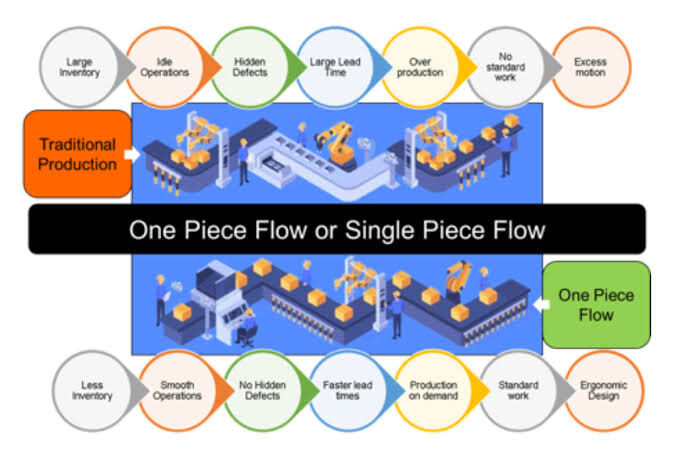
Single-piece flow is a production system where each unit of product is processed sequentially without waiting or batching. This means that products move through the production process in a continuous flow, with minimal or no waiting time between steps.
Benefits of Single-Piece Flow
- Reduced lead time: By eliminating wait times and bottlenecks, single-piece flow can significantly reduce lead times.
- Improved quality: Single-piece flow can help to improve quality by making it easier to identify and correct defects.
- Increased productivity: By reducing waste and improving efficiency, single-piece flow can increase productivity.
- Enhanced flexibility: Single-piece flow can make it easier for businesses to respond to changes in customer demand.
- Improved employee morale: Single-piece flow can create a more satisfying and rewarding work environment for employees.
Implementing Single-Piece Flow
Implementing single-piece flow can be challenging, but it is possible with careful planning and execution. Here are some tips for implementing single-piece flow:
- Identify bottlenecks: Identify the areas of your production process that are causing bottlenecks.
- Reduce setup time: Minimize the time it takes to set up equipment for production.
- Balance the workload: Ensure that the workload is evenly distributed among workstations.
- Use a pull system: Implement a pull system to ensure that products are produced only when they are needed.
- Continuously improve: Single-piece flow is an ongoing process, and businesses should continue to seek ways to improve their implementation.
Challenges of Single-Piece Flow
Some of the challenges of implementing single-piece flow include:
- High initial costs: Implementing single-piece flow can require significant investments in new equipment and training.
- Disruptions: Single-piece flow can be disrupted by unexpected events, such as equipment failures or supply chain disruptions.
- Resistance to change: Employees may resist changes to their work processes.
Conclusion
Single-piece flow is a powerful tool that can help businesses improve efficiency, quality, and productivity. However, it is important to carefully consider the challenges and benefits before implementing single-piece flow in your organization.

